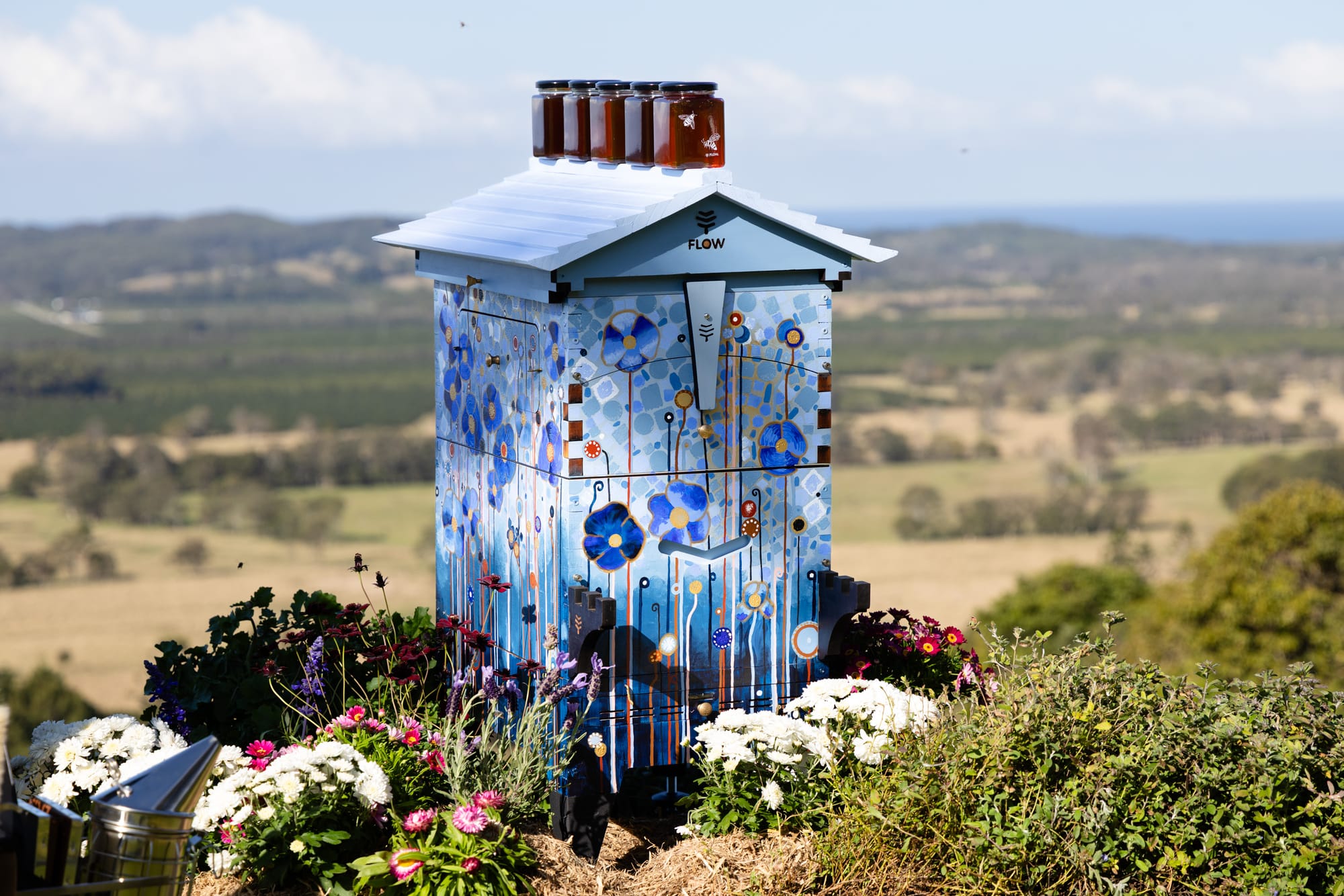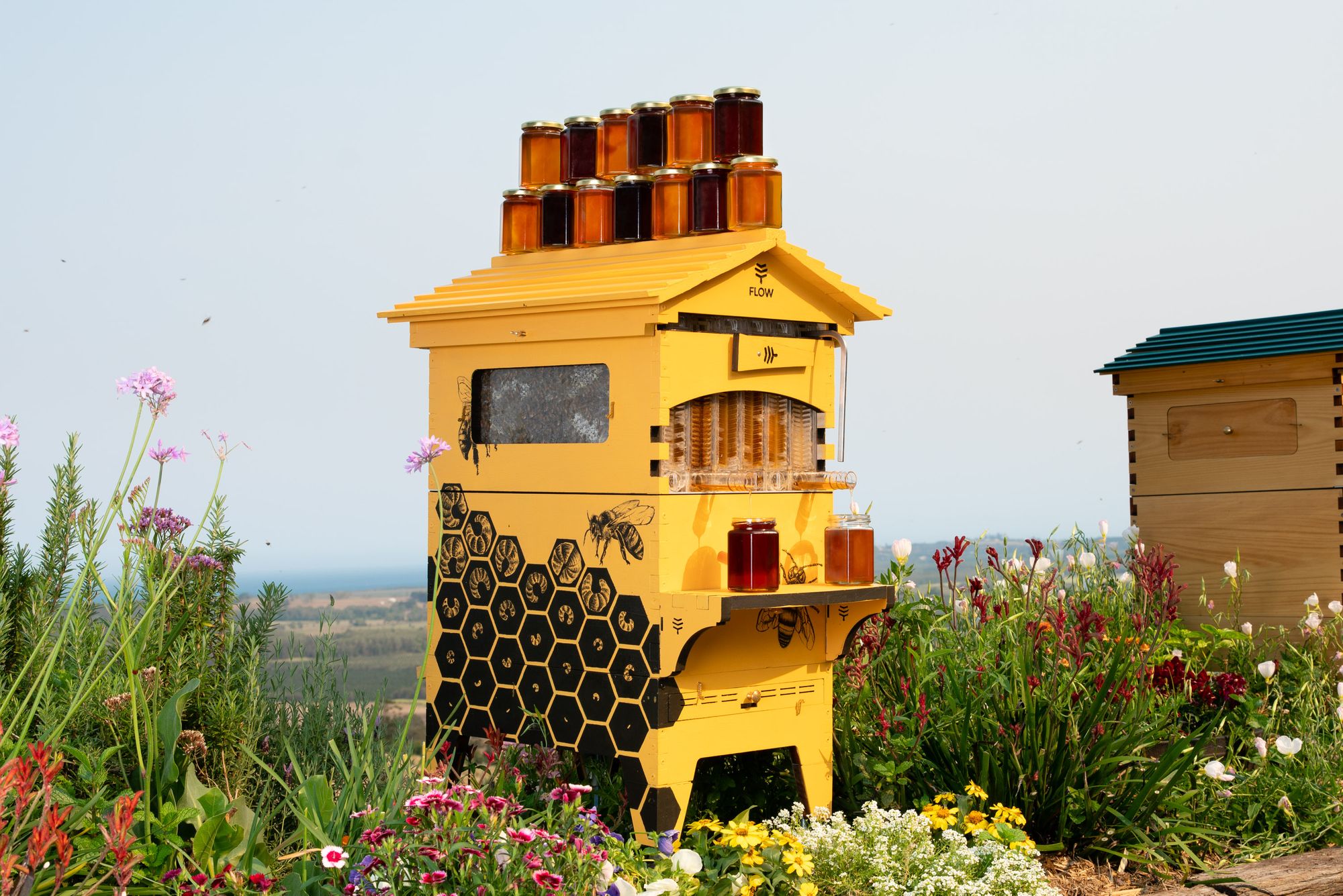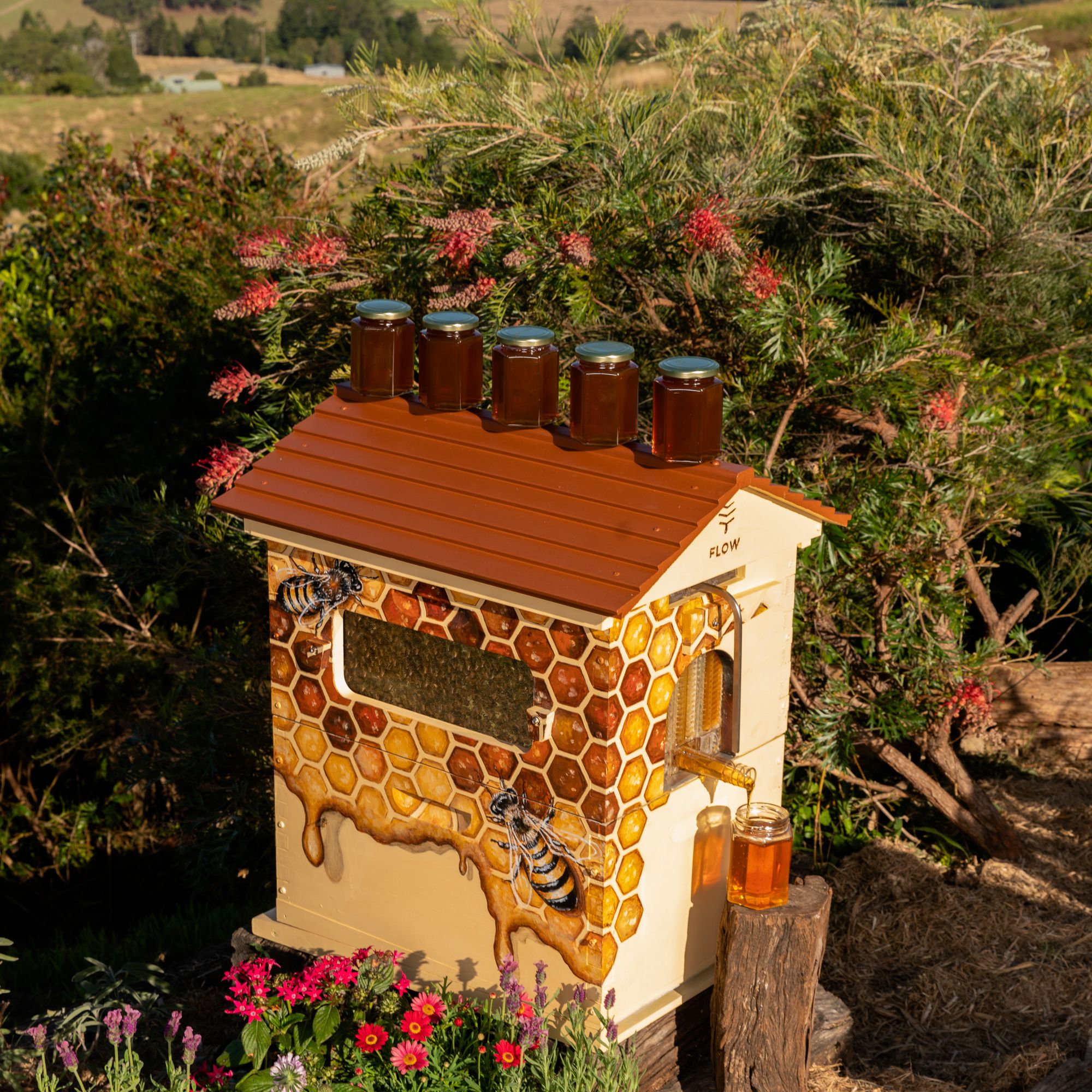It is important to protect the timber of your hive to ensure its longevity. All Araucaria and ThermoGrade Paulownia Flow Hives and Supers need to be sealed with at least 2 coats of exterior-grade, good-quality house paint. As with all outdoor paint, it will require a refresh every 12-24 months, depending on local conditions.
Western Red Cedar
Many beekeepers use oils such as Tung oil or Linseed, to treat their cedar timber components, however, when finishing with oils in wet climates, mildew (black mould) can grow on the surface of your hive. This will not affect the structural integrity of your hive and should not have any impact on your bees, but may not be the look you were anticipating.
It can be a challenge keeping wood outdoors looking like new, especially in wetter climates. If you wish for your hive to stay mould free and to maintain the natural timber look, we suggest you go to your local paint store and ask for a finish that will last outdoors.
Aside from mildew, wood outdoors will naturally turn to grey. If you want to prevent your hive from greying, it's recommended to use a finish with a tint. The tint helps shield the wood from UV which is what turns the wood grey.
When choosing a finish you'll have the choice of natural or non-natural finishes. If you go with a less natural finish we recommend you leave the inside of the timber boxes unfinished to keep the internal wood natural for the bees.
It is advisable to coat the inside of the window covers to stop these from expanding excessively in wet weather. If the finish has a strong smell it is recommended to leave it a few days before installing your bees.
It's important to note that we have had limited success in treating hives with varnish. If the treatment you are using is not breathable this can result in moisture from inside the hive affecting the external finish and producing mould or discolouration under the surface of your timber treatment.
We recommend painting all roofs, (even western red cedar), with at least two coats of good quality exterior paint for the longest and most effective protection.

Araucaria & ThermoGrade Paulownia
It's required to paint Araucaria & ThermoGrade Paulownia hives and all roofs with at least two coats of good quality exterior paint for the longest and most effective protection.
This will also give you the opportunity to get creative with your designs.
Painting tips and tricks below:




Painting tips and tricks:
Start with assembling your hive. Make sure to leave all the fittings off the hive, as this will make your job just a little bit easier.
Use a base coat first – go for a single background colour to make the artwork stand out. We recommend using a non/low-toxic exterior-grade paint for the health of your bees.
Make sure to paint a minimum of two coats, to ensure your hive is properly weatherproof. Be sure to let each coat dry thoroughly between applications, as per the instructions provided by the paint company.
Don’t forget to paint the rear access latch and windows. We recommend painting both the inside and outside of the window covers, as this will prevent them from warping over time – plus, the bees won’t be exposed to the inside covers, so it’s fine to paint these. It’s important to take care of the sides of any removable windows or doors as too much paint can create a tight fit.
Once you’ve completed the base coats, now is the time to get creative! You can get sample paint pots from the hardware store for multiple colours, should you choose to get colourful with the design.
Make sure to let your hive dry thoroughly before attaching the brass knobs, latches and window covers. You’ll need to allow a few days for the hive to air out before housing your bees.
Add your colony, and watch them enjoy their new, beautiful home!




